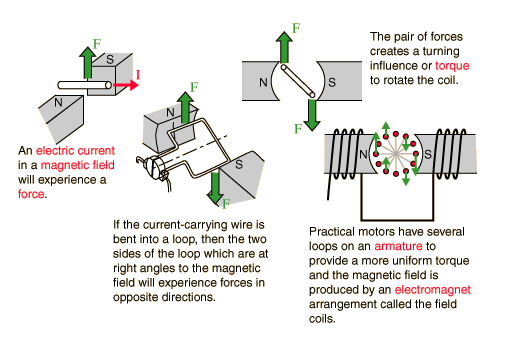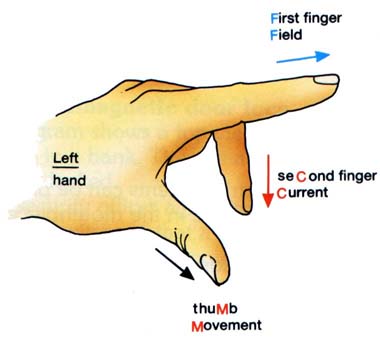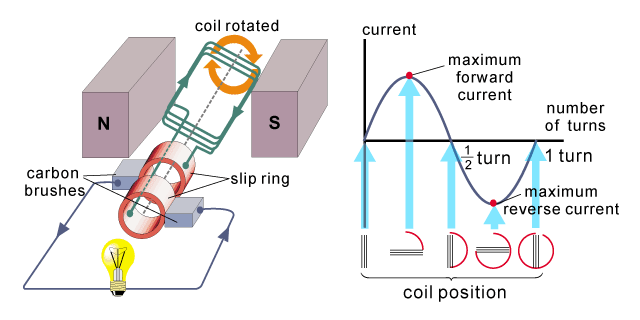Motors
|
A current carrying wire has its own magnetic field. If we put this wire into a magnet it will experience a force. This will make it move. The direction of movement can be predicted using Flemming's left hand rule:
Hold your left hand in a fist and then spread out the thumb, first finger and second finger so that they are at fight-angles to each other.
We can use this idea to make a motor:if we put a coil of current carrying wire into a magnetic field it will spin. Motors use split-pin contacts so that the coil will spin: this means that a coil will make half a turn, upwards for example, and then touch the opposite contact which will make it spin downwards. Otherwise the coil would only make half a turn. Test this with your left hand rule! Look at the pictures below: |
|
Generators
Alternatively, if we spin a coil of wire in a magnetic field, a current will be induced in the wire. These generators produce AC current. You can predict the direction of the current using Flemming's Right hand rule. It has the same fingers as the left-hand rule. Use it to see why the generator produces AC current.



